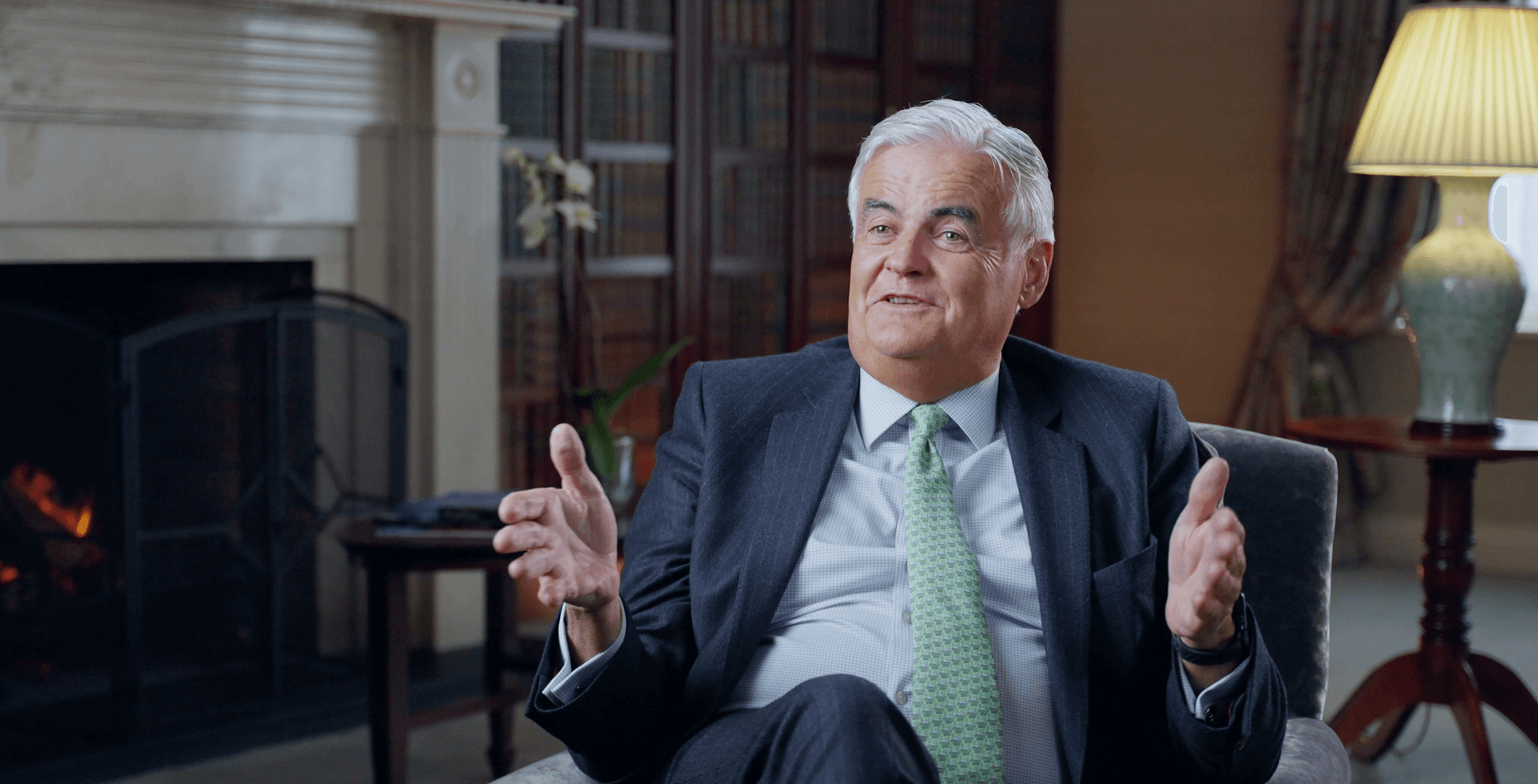Imagine this: You’re sitting at a cosy café in Dublin, sipping your favourite cup of tea, when you overhear a conversation at the next table. A young entrepreneur is excitedly sharing his latest investment idea with a friend, convinced he’s found the golden ticket to financial success. As a seasoned financial planner, you know better. The allure of a single, high-reward investment can be tempting, but it often leads to heartbreak and loss. In the world of investing, there’s only one thing that can truly be considered a “free lunch”: diversification.
The Power of Diversification
Diversification is the practice of spreading your investments across different assets to reduce risk. It’s like not putting all your eggs in one basket. If one investment fails, others can compensate for the loss, ensuring your overall portfolio remains relatively stable. The concept is simple, but its impact is profound.
The Concept of Risk and Reward
To understand diversification, you need to grasp the relationship between risk and reward. Every investment carries some level of risk, and typically, the potential for higher returns comes with higher risk. Diversification helps manage this risk without necessarily sacrificing returns. By investing in a mix of assets—stocks, bonds, real estate, and more—you can mitigate the impact of a poor-performing asset on your overall portfolio.
A Real-Life Example
Let’s take a trip down memory lane to the 2008 financial crisis. Many investors who had heavily invested in real estate or specific financial stocks faced devastating losses. However, those with diversified portfolios—holding a mix of stocks, bonds, and international investments—fared much better. While they still experienced losses, they were not as severe, and their recovery was quicker.
The Irish Perspective
In Ireland, the importance of diversification is just as relevant. Our economy, while robust, is still subject to global market influences. By diversifying your investments, you can protect yourself from the volatility that can arise from economic changes both domestically and internationally.
The Role of Property in Irish Portfolios
Irish investors often have a strong inclination towards property investment. It’s understandable given the historical stability and the emotional connection many feel towards owning property. However, placing too much emphasis on property can be risky. The property market can be highly cyclical, and events like the property bubble burst in the late 2000s can lead to significant financial pain. Diversifying into other assets like equities, bonds, and international investments can help cushion against these risks.
Equities and Bonds
Equities (stocks) and bonds should be staples in any diversified portfolio. Stocks offer the potential for higher returns, albeit with higher risk. Bonds, on the other hand, provide more stable returns and act as a counterbalance to the volatility of stocks. In Ireland, investing in a mix of domestic and international stocks can provide exposure to different economic cycles, further enhancing diversification.
Embracing Index Funds
One of the best ways to achieve diversification is through index funds, such as the S&P 500. Index funds are mutual funds or exchange-traded funds (ETFs) designed to replicate the performance of a specific index, such as the S&P 500, which includes 500 of the largest companies listed on US stock exchanges. By investing in an index fund, you gain exposure to a broad range of companies, industries, and sectors, providing instant diversification.
Benefits of Index Funds
- Low Costs: Index funds typically have lower fees compared to actively managed funds. This is because they passively track an index rather than relying on expensive fund managers to pick stocks.
- Broad Market Exposure: Investing in an index fund like the S&P 500 means you own a piece of 500 different companies. This broad exposure helps mitigate the risk of any single company’s poor performance impacting your entire portfolio.
- Consistent Performance: Historically, index funds have performed well over the long term. While they may not offer the highest returns in short periods, their consistency and lower volatility make them a solid choice for long-term investors.
Avoiding Common Pitfalls
Despite the clear benefits of diversification, many investors fall into common traps that can undermine their efforts.
Emotional Investing
It’s easy to get emotionally attached to certain investments, especially if they’ve performed well in the past or hold sentimental value. However, investing based on emotion rather than rational analysis can lead to poor decision-making. For example, investing heavily in a single company because you believe in its mission or because it has done well in the past can expose you to unnecessary risk. Always strive to keep your emotions in check and make decisions based on sound financial principles.
Chasing Performance
Another common mistake is chasing after the latest high-performing investment. It’s tempting to pour money into the current “hot” stock or sector, but this strategy often leads to buying high and selling low. Diversification helps you avoid this pitfall by maintaining a balanced approach, ensuring you’re not overly exposed to any single investment.
The Mechanics of Diversification
So, how do you diversify effectively? Here are some practical steps:
- Asset Allocation: Determine the right mix of asset classes for your portfolio. This depends on your risk tolerance, investment goals, and time horizon. A typical diversified portfolio might include a mix of stocks, bonds, real estate, and commodities.
- Geographic Diversification: Investing in different geographic regions can protect you from country-specific risks. For Irish investors, this might mean including US, European, and emerging market equities in your portfolio. Index funds like the S&P 500 are an excellent tool for achieving this.
- Sector Diversification: Within each asset class, spread your investments across different sectors. For example, if you’re investing in stocks, include companies from various industries such as technology, healthcare, finance, and consumer goods.
- Regular Rebalancing: Market movements can shift your asset allocation over time. Regularly review and rebalance your portfolio to ensure it stays aligned with your original allocation plan. This involves selling assets that have grown to a larger percentage of your portfolio and buying those that have decreased.
The Role of Professional Advice
Navigating the complexities of diversification can be challenging, especially for those new to investing. This is where professional financial advice comes into play. As a financial planner, I’ve seen firsthand the difference that sound, diversified investing strategies can make in securing a comfortable retirement and achieving financial goals.
- Tailored Investment Plans: A professional advisor can help tailor an investment plan that suits your specific needs and goals. They can provide insights into asset allocation, help you avoid common pitfalls, and ensure your portfolio remains diversified and balanced over time.
- Emotional Support: Investing can be an emotional journey. Market downturns can cause anxiety and lead to hasty decisions. A financial advisor provides an objective perspective and helps you stay the course, ensuring you don’t make decisions based on short-term market movements.
Embrace the Free Lunch
In the ever-changing landscape of investing, diversification remains a steadfast strategy for managing risk and securing long-term returns. It’s the closest thing to a free lunch you’ll find in the financial world. By spreading your investments across different assets, sectors, and geographies, you can protect yourself from volatility and build a resilient portfolio that can weather the storms of the market.
So, the next time you’re tempted by the allure of a single high-reward investment, remember the lessons of diversification. It’s not just a strategy; it’s a mindset that prioritises stability and long-term success over short-term gains. Embrace the free lunch, and let diversification guide you towards a secure financial future.
Feel free to reach out for bespoke advice on how to diversify your portfolio effectively. As always, we’re here to help you navigate the complexities of investing and achieve your financial goals. Happy investing!
In Their Own Words







